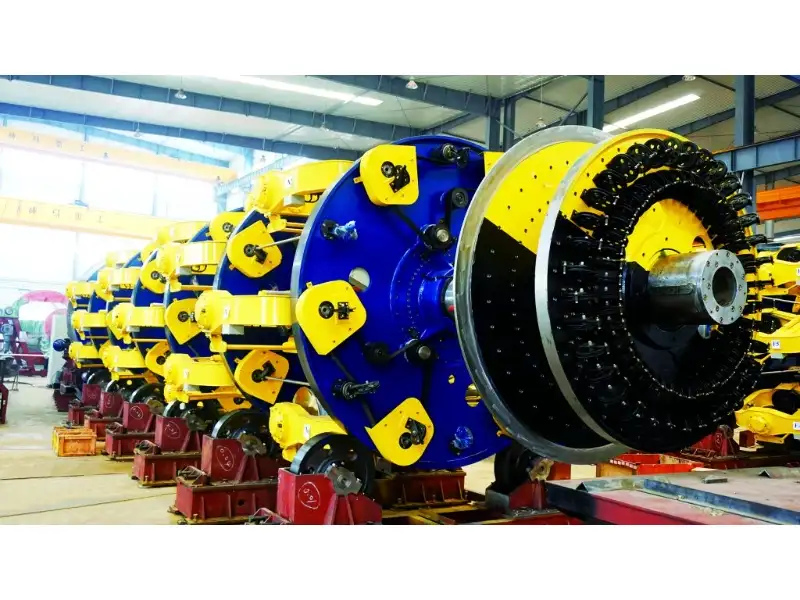Hello there, future maestro of wires and cables! If you're looking to dive into the world of wire and cable production, you've come to a fascinating realm where precision meets innovation. Let's unravel the mystery of wire and cable making equipment together, shall we? I'll guide you through the typical specifications and production capacities you might encounter, all wrapped up in a friendly and approachable manner.
Understanding the Basics
Wire and cable making is a specialized industry that requires specific machinery to produce high-quality products. The equipment you choose will depend on the type of wire or cable you want to produce, its intended use, and your production scale.

Typical Specifications to Consider
Wire Gauge and Material:
The gauge (thickness) of the wire you're producing is crucial. Equipment can handle a wide range of wire gauges, from thin enameled wires to thick power cables.
Material types also vary, including copper, aluminum, and other conductive materials.
Insulation and Jacketing:
The type of insulation (PVC, XLPE, rubber, etc.) and jacketing (nylon, polyester, etc.) will determine the cable's performance and application.
The equipment must be capable of applying these materials uniformly and efficiently.
Conductor Stranding:
Different applications require different stranding patterns. The equipment should be versatile enough to handle various stranding configurations.
Cable Configuration:
Single-core, multi-core, and complex cable configurations are common. The machinery should be adaptable to produce these different arrangements.
Production Speed:
The speed at which the equipment can produce wire and cable is measured in meters per minute (m/min). This will vary based on the complexity and size of the product.
Diameter Range:
The final diameter of the cable will depend on the number of cores, their size, and the thickness of the insulation and jacketing.
Tension Control:
Precise tension control is vital for maintaining the quality of the wire and cable during production.
Take-up Systems:
The method of winding and storing the finished product, which can range from simple reels to complex cross-winding systems.

Production Capacities
When it comes to production capacities, it's all about how much equipment can produce within a given time frame. Here are a few factors that will influence this:
Machine Size and Design:
Larger, more advanced machines typically have higher production capacities and can handle a wider range of products.
Operator Skill Level:
Well-trained operators can increase production efficiency and output, ensuring the equipment operates at its optimal capacity.
Material Supply:
The speed at which materials are fed into the machine will significantly affect production capacity.
Downtime and Maintenance:
Regular maintenance and minimizing downtime are key to maintaining high production levels and ensuring consistent output.
Market Demand:
Your production capacity should align with market demand for the types of wires and cables you produce, ensuring that you can meet customer needs efficiently.
Making an Informed Choice
Choosing the right wire and cable making equipment is like selecting the perfect instrument for a musician—it needs to resonate with your production goals and capabilities. Consider the following:
Your Product Range: What types of wires and cables do you plan to produce? Understanding your product range is crucial in selecting equipment that aligns with your specific production needs.
Your Market: Who are your customers, and what are their needs? Understanding your market and customer requirements will help you tailor your production capacity to meet demand effectively.
Your Scale: Are you starting small and growing, or do you need high-volume production from the start? Your scale of operation will influence the size and capacity of the equipment you require.
Your Budget: What can you afford, and what return on investment can you expect? Understanding the financial aspects and projected returns is essential in making a sound investment decision.
Wrapping Up
Wire and cable making is a dynamic industry with endless possibilities. By understanding the specifications and capacities of the equipment, you're well on your way to crafting your own path in this exciting field. Remember, the right equipment is an investment in your business's future, so take your time, ask questions, and choose wisely.
Happy wire and cable making!
And there you have it, dear reader! With this comprehensive guide in hand, you're equipped with the knowledge to make informed decisions about your wire and cable making equipment. If you have more questions or need further assistance, don't hesitate to reach out. We're here to help you every step of the way in your journey to becoming a wire and cable making virtuoso!